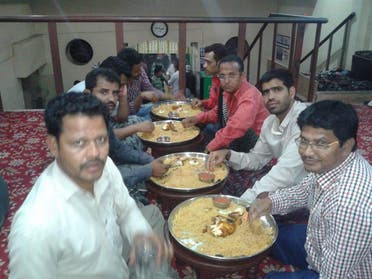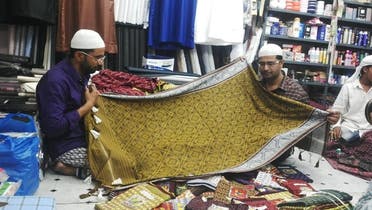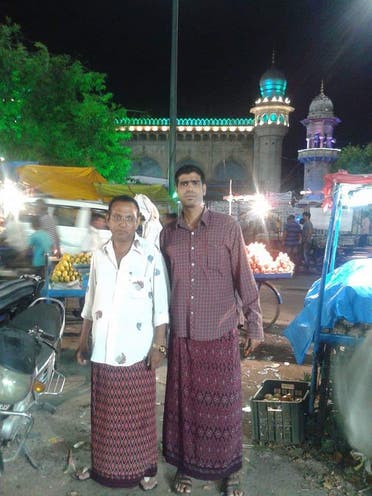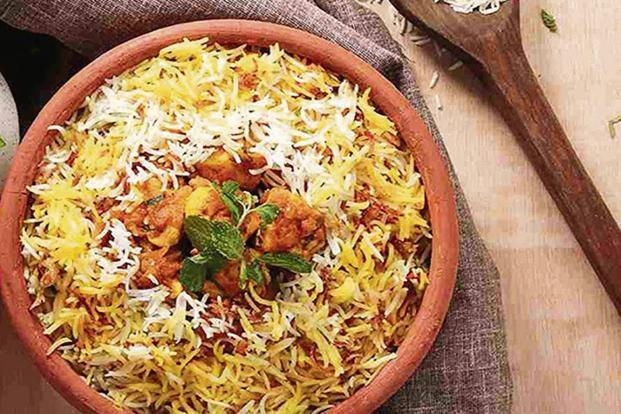Hyderabad, TELANGANA:

Can you believe that there is a large settlement of Yemeni descent people in India’s Hyderabad? Barkas, about 4 kms from the iconic Charminar, presents a slice of Yemen.
Here, a large number of Arabs from Yemen, called Hadhramis, have settled down having migrated from their country of origin for many generations.
Most of them were employed in the Nizam government. Barkas was home to the former employees of Nizams, the sovereigns of the erstwhile princely state of Hyderabad. The colony originally used to serve as the Military Barracks of the former ruler of Hyderabad – the Nizam.
Men with Arabian facial features clad in Yemeni lungis (wraparound kilt) or Futah ambling around the colony’s narrow lanes is a regular sight that intrigue outsiders.
History records that Hadhramis of Yemen have migrated for centuries in large numbers, establishing a diaspora that extends around the Indian Ocean, Saudi Arabia and the other Gulf states.
The Hadhramaut region, one of the southern governorates of Yemen, today has around 1.5 million inhabitants. Though migration began during the 3rd Hijri century (eighth century in the Gregorian calendar) but Hyderabad connection is of not that old. A good number of Hadramis had already migrated on India’s West Coast in the ninth century AD.

World War II
According to Salam Bin Juman Bamraan, of Yemeni origin, who lives in Barkas, “My father Juman Saleh Bamraan took the ship to Mumbai in 1942 during the World War II since the situation in Yemen was not conducive for living.
“When my father came to Hyderabad the Nizam of Hyderabad was kind enough to give him a job. My father married a local Muslim woman and thus we integrated into the Hyderabadi community. Our language at home was Arabic until recently but after my father died we converse in Deccani Urdu.” Though Salam did go to Kuwait for work but did not return to Yemen.
Yemen served as a trans-shipment center for luxury goods — particularly spices — originating in India and points farther east and also as a Haj route for pilgrims coming from India.
So, migration was happening to and fro. There were thousands of traders from India doing business in Yemen, mainly Aden and Sana.
Dhirubhai Ambani, the founder of the now famous Reliance Group, also started his career as a trader in Aden and his famous son Mukesh Ambani, Reliance Industries Limited chairman, was also born in Aden.

300,000 strong Diaspora
These age-old ties between India and Yemen are reflected now by the presence of nearly 300,000 strong Yemeni-origin Diaspora in India and a vibrant Indian-origin Diaspora in Yemen.
Besides India, almost all Arabs in Southeast Asia and India trace their ancestry to Hadhramaut.
Five and six generations after their forefathers made Hyderabad their homes, many have retained their culture and traits. The members of this well-knit community are now integrated in Hyderabad. Homecomings had already begun dropping off in the 1970s as Yemen became more politically disturbed.
A documentary by Adam Sawab, a Yemeni student who did journalism from Osmania University titled ‘Barkas – A Small Yemen in India’ as part of his course shed light on Hadhramis living in Hyderabad’s Barkas.
The documentary reported that Barkas is a habitat for mainly members of the Chaush community, who are direct descendants of the Hadhrami – military men in the Hadhramaut region in Yemen, there are 52 Yemeni tribes in Hyderabad.

Settled tribesmen
Some of the Yemeni tribes settled here are those of al-Saadi, al-Nahdi, al-Yamani, Barabaa, al-Amoodi, al-Saqqaf, Bamraan, al-Aidroos, al-Saadi among others.
“During the time of the Nizam’s rule, the Arab population here increased and slowly settled mainly in the Army barracks, now Barkas, on the outskirts of the city,” Adam stated in his documentary.
Sheikh Mohammed Azzan Jabari, whose grandfather came from Yemen in 1940 and was employed in Nizam’s army, says that their culture is of mixed origin with strands from Arabs and local.
Having his own textiles business in Barkas, he says, “We are into third generation. Our weddings still encompass elements of Arabic traditions like nikah is performed in Barkas’ jame masjid and we play the duff which is a Yemeni custom. We still relish Yemeni traditional breakfasts items like mandi, fuul (a dish made of cooked fava beans), hareesa (savory porridge), etc and mandi, kabsa as meals. I think Barkas is home to more than 60,000 Yemeni descent people.”
So, if you want to experience Yemeni culture with a plateful of mandi (as the area is teeming with restaurants selling delectable mandi) head to Hyderabad’s Barkas locality.

source: http://www.english.alarabiya. net / AlArabiya News / Home> Features / by Aftab Husain Kola / December 13th, 2018









